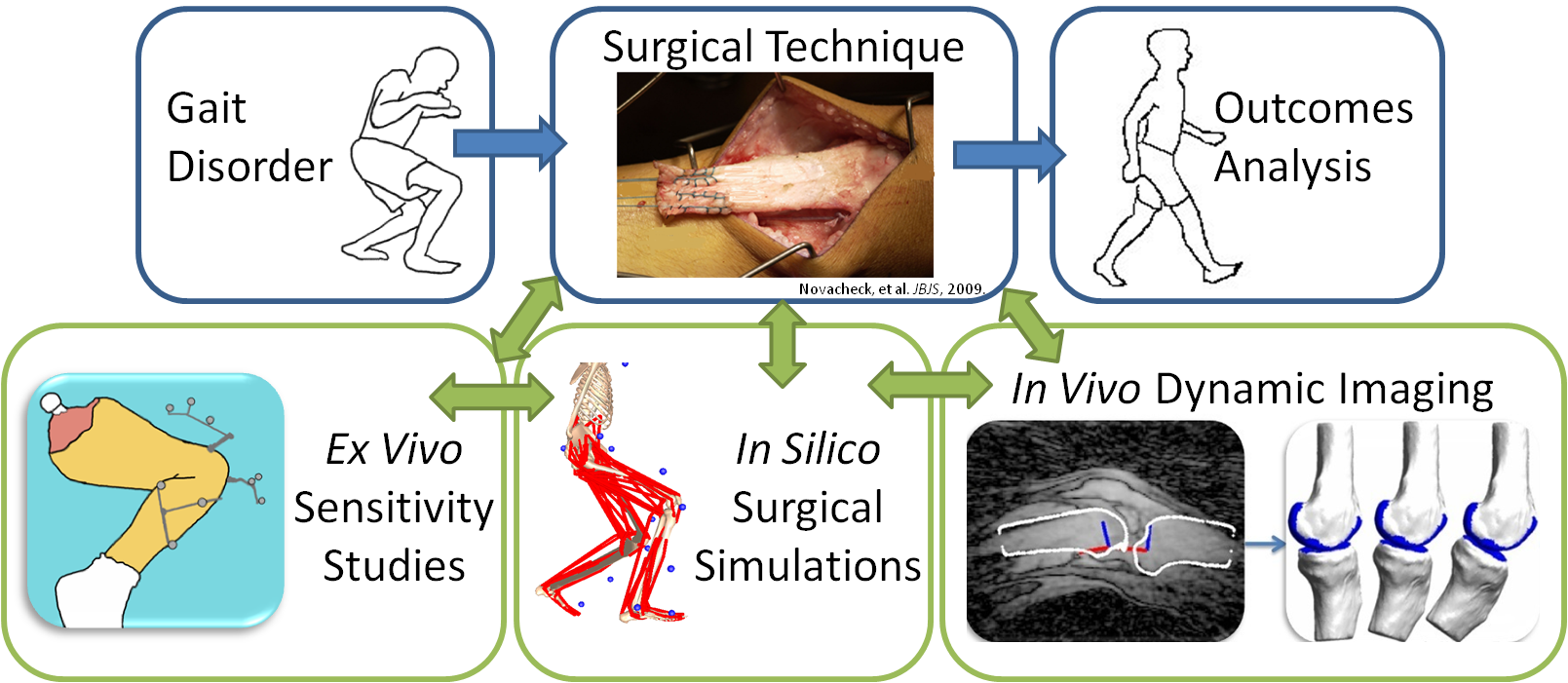Surgical Correction of Pediatric Gait Disorders

|
Quick Facts:
Project Dates:
July 2012 - Present
Funding Agency:
NIH: Eunice Kennedy Shriver National Institute of Child Health & Human Development
Current NMBL Personnel:
Rachel Lenhart, Darryl Thelen
External Collaborators:
Matt Halanski, MD, UW Orthopedics
Mike Schwartz, PhD, Gillette Children's Specialty Healthcare
Tom Novacheck, MD, Gillette Children's Specialty Healthcare
|
Abstract
Cerebral palsy (CP) is a neurological disorder of development affecting more than 750,000 people in the US. A common source of morbidity in this condition is gait disorders, with crouch gait being one of the most common forms. Crouch is a fatiguing gait characterized by excessive knee flexion during stance, that often requires surgical correction to allow patients to continue to ambulate as they mature. Distal femoral extension osteotomy and patellar tendon advancement (DFEO + PTA) is a promising new surgical approach for reducing crouch and restoring quadriceps strength in these children. While initial clinical outcomes are promising, complications are common, the underlying mechanisms are not understood and specifics of the procedures vary substantially between surgeons. Perhaps more importantly, the long term implications of the procedures on skeletal growth and cartilage health are
unclear. This project aims to use musculoskeletal modeling, cadaveric studies, dynamic imaging, and gait analysis techniques to investigate the influence of DFEO + PTA on musculoskeletal mechanics. The anticipated outcome is a scientific understanding of the surgical effects on the musculoskeletal system, and new computational tools which could enable clinicians to predict the outcomes of interventions used to treat gait disorders in CP.
(Back to Research)
|
|

